Gute Besserung, Adi! Wow that mizzen has quite a rake to it, doesn’t it? The degree of slant seems very angled to the rear. And I’ve never built or even noticed a ship where the top mast is located aft of the lower mast. Is that a peculiarity of your ship, or have you seen it in others as well?
-

Win a Free Custom Engraved Brass Coin!!!
As a way to introduce our brass coins to the community, we will raffle off a free coin during the month of August. Follow link ABOVE for instructions for entering.
-

PRE-ORDER SHIPS IN SCALE TODAY!
The beloved Ships in Scale Magazine is back and charting a new course for 2026!
Discover new skills, new techniques, and new inspirations in every issue.
NOTE THAT OUR FIRST ISSUE WILL BE JAN/FEB 2026
- Home
- Forums
- Ships of Scale Group Builds and Projects
- Le Coureur 1776 1:48 PoF Group Build
- Le Coureur 1776 1:48 Group Build Logs
You are using an out of date browser. It may not display this or other websites correctly.
You should upgrade or use an alternative browser.
You should upgrade or use an alternative browser.
Le Coureur 1776, model 1:48 by Adi
- Thread starter pianoforte
- Start date
- Watchers 51
Sorry to hear of the medical challenge and pray that all goes well in recovery. It is always a delight to see your beautiful work, Adi!
- Joined
- Apr 20, 2020
- Messages
- 6,205
- Points
- 738

Dear EddieThank you all for your likes and comments. Today I come with the standing rigging on the mizzen mast.
I was somewhat slowed down by pending vein operation but am now completely well again.
View attachment 383278
View attachment 383279
View attachment 383280
View attachment 383281
View attachment 383282
View attachment 383283
View attachment 383284
View attachment 383285
I'm Glad to hear you are recovering !
You do an excellent and beautiful job on the mast and ropes. Well done
Thank you for the wishes. I think this mast constellation is typical for a Lugger and can be seen very nicely on Boudriot's drawings.Gute Besserung, Adi! Wow that mizzen has quite a rake to it, doesn’t it? The degree of slant seems very angled to the rear. And I’ve never built or even noticed a ship where the top mast is located aft of the lower mast. Is that a peculiarity of your ship, or have you seen it in others as well?
I guess I've never seen a lugger before, or noticed it on one. Live and learn!Thank you for the wishes. I think this mast constellation is typical for a Lugger and can be seen very nicely on Boudriot's drawings.
Beautiful work. Very detailed. Congratulations Adi.Thank you all for your likes and comments. Today I come with the standing rigging on the mizzen mast.
I was somewhat slowed down by pending vein operation but am now completely well again.
View attachment 383278
View attachment 383279
View attachment 383280
View attachment 383281
View attachment 383282
View attachment 383283
View attachment 383284
View attachment 383285
Get well soon.
Take a look at the planset review of the Lugger Le Coureur by Jean BoudriotGute Besserung, Adi! Wow that mizzen has quite a rake to it, doesn’t it? The degree of slant seems very angled to the rear. And I’ve never built or even noticed a ship where the top mast is located aft of the lower mast. Is that a peculiarity of your ship, or have you seen it in others as well?
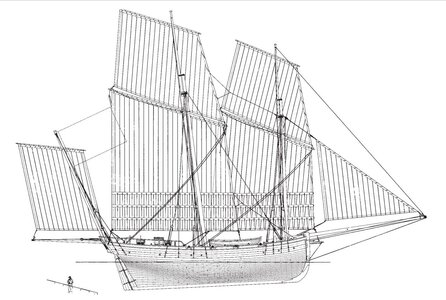
These masts and sails are making this model extremely attractive - so much "cloth" for this little ship
Planset review - Lugger LE COUREUR - 1776" in scale 1:48 by Jean BOUDRIOT & Hubert BERTI
Planset Review: Lugger LE COUREUR - 1776 in scale 1:48 by Jean BOUDRIOT & Hubert BERTI available from ancre in different languages -> english, french or italian https://ancre.fr/en/monograph/50-monographie-du-coureur-lougre-1776.html#/langue-francais Excerpts from the drawings taken from...
shipsofscale.com
Looking great Adi, glad you fit and well again. Have great weekendThank you all for your likes and comments. Today I come with the standing rigging on the mizzen mast.
I was somewhat slowed down by pending vein operation but am now completely well again.
View attachment 383278
View attachment 383279
View attachment 383280
View attachment 383281
View attachment 383282
View attachment 383283
View attachment 383284
View attachment 383285
with all the masts she is getting big, or?
Very good work - Bravo!
Very good work - Bravo!
with all the masts she is getting big, or?
Very good work - Bravo!
Yes Uwe, for such a small ship, she seems really big, what a sail area. I was impressed when I saw Boudriot's plan.
Hello Adi, great job.
The little runner looks wonderful. I look forward to the moment when the first sails are hoisted.
The little runner looks wonderful. I look forward to the moment when the first sails are hoisted.
- Joined
- Jan 9, 2020
- Messages
- 10,543
- Points
- 938

Dear Adi. It has been quite some time since my last visit - and oh boy - what wonderful work you are doing here. The Luger looks stunning and reaffirms my affinity for this not-so-little, little ship. Yours is a beauty!
Dear friends, thank you for the likes and comments. I am now getting into sail production. At first I planned to make the sails out of tissue paper, like my gaff sloop. After careful consideration, I decided to go for cotton batiste. For scale reasons, sewing the sails is out of the question for me, because in 19th century the stitch width was between 9 and 13 mm. Transferred to the scale of 1:48, the stitch width would be 0,20 - 0,25 mm, which would be 4 to 5 stitches per millimeter!
So only gluing comes into question. This also applies to hems, doubles, reef tapes and bolt-ropes.
A piece of cotton batiste is cut to size, dipped in glue water mixture and then hung to dry. After drying, cut 12 mm wide strips from the cloth with a really sharp scalpel and then glue them to each other with 2 mm overlap. Then glue the doubles and the bolt-rope. For the placement of the eyelets I use a very thin rubber thread.
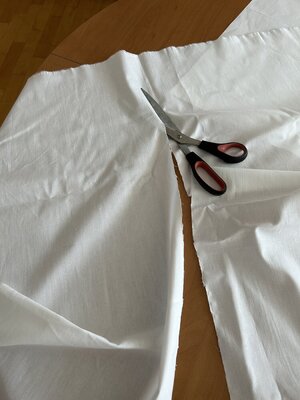
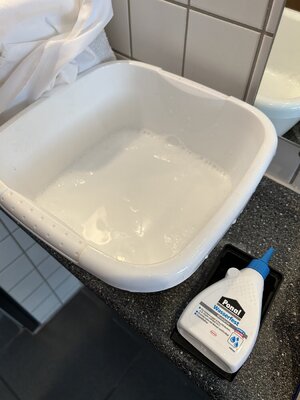

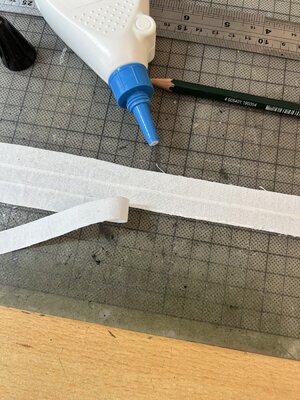
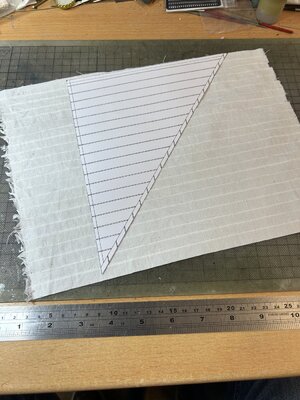
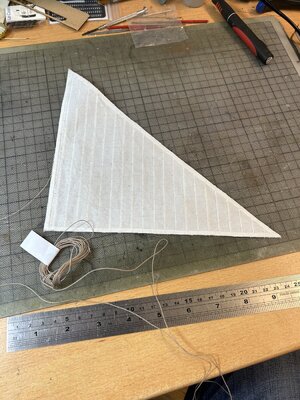
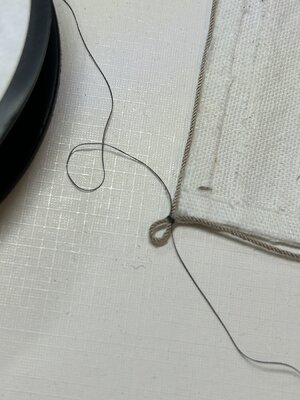
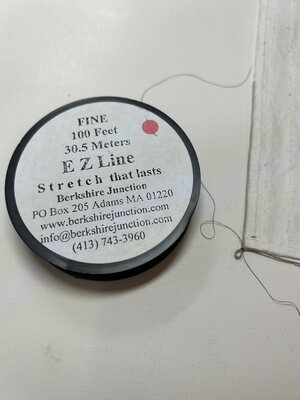
So only gluing comes into question. This also applies to hems, doubles, reef tapes and bolt-ropes.
A piece of cotton batiste is cut to size, dipped in glue water mixture and then hung to dry. After drying, cut 12 mm wide strips from the cloth with a really sharp scalpel and then glue them to each other with 2 mm overlap. Then glue the doubles and the bolt-rope. For the placement of the eyelets I use a very thin rubber thread.








a very good start with the sails - I am looking forward
Wow, Adi your sail looks great. I'm sure it will be a great overall result.





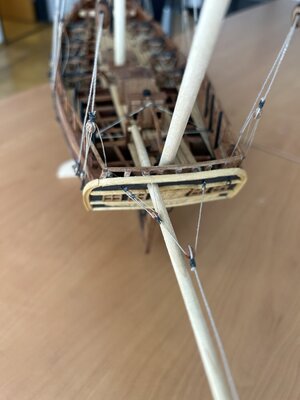
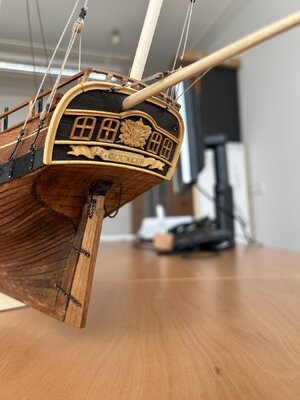
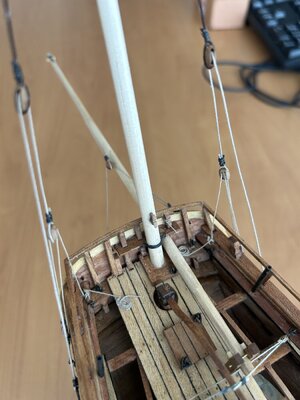
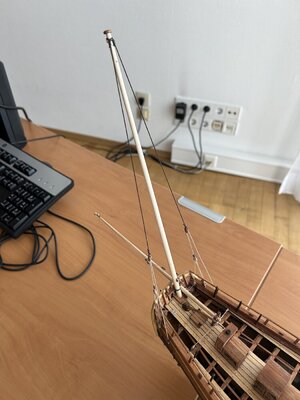
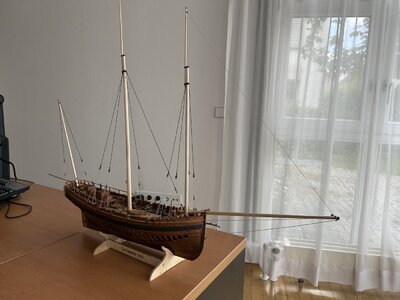
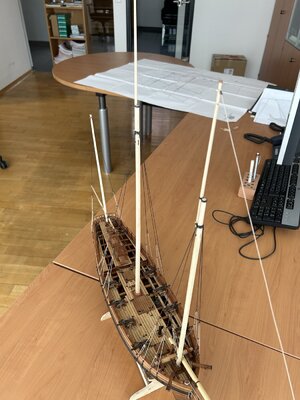

 I'm sure you will continue to do so with with the sails
I'm sure you will continue to do so with with the sails